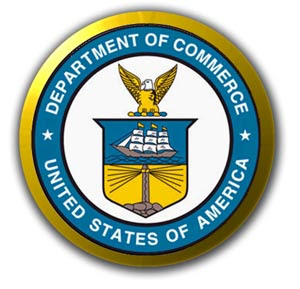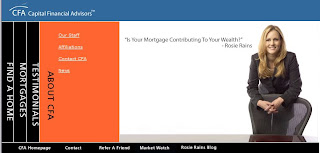On November 17, 2008, the USPTO issued its latest "Miscellaneous Changes to Trademark Rules of Practice," 73 CFR 67759
et seq. (pdf
here). According to the PTO, these changes are intended "to clarify certain requirements for applications, intent to use documents, amendments to classification, requests to divide, and Post Registration practice; to modernize the language of the rules; and to make other miscellaneous changes. For the most part, the rule changes are intended to codify existing practice, as set forth in the
Trademark Manual of Examining Procedure."

Former Examining Attorney Michael E. Hall strenuously takes issue with one of the rule changes, in the article presented below (pdf
here).
The PTO’s Dubious New Trademark Rule 2.85(f) Concerning
Identifications in Madrid Applications
by Michael E. Hall
The holder of an international registration issued by WIPO’s International Bureau (“IB”) may seek an extension of protection to the United States under Section 66(a) of the Trademark Act. See generally T.M.E.P. §
1904 et seq. The USPTO has taken the position that if such a Madrid application contains an identification of goods/services that is indefinite according to the USPTO’s standards for specificity in identifications, the USPTO will require the Madrid applicant to provide a definite identification that is within the scope of the international class assigned by the IB to those goods/services. The USPTO rewrote the relevant sections of the 5th edition of the T.M.E.P., issued in September 2007, to reflect its position (e.g., T.M.E.P. §
1904.02(b)) and issued
Examination Guide 3-08 in July 2008 to further explain its position.
On November 17, 2008, the USPTO published its
Notice of Final Rulemaking (pp. 67762-63 deal with this issue), indicating that it has re-designated Trademark Rule 2.85(g) as 2.85(f), and that new Rule 2.85(f) provides as follows:
Classification schedules shall not limit or extend the applicant’s rights, except that in a section 66(a) application, the scope of the identification of goods or services for purposes of permissible amendments (see § 2.71(a)) is limited by the class, pursuant to § 2.85(d).
This new rule, effective January 16, 2009, replaces old Rule 2.85(g), which provided that, “Classification schedules shall not limit or extend the applicant’s rights.” In its own words, the USPTO is amending the old rule “to note an exception that in section 66(a) applications, the scope of the identification of goods or services for purposes of permissible amendments is limited by the class.” (p. 67763, column 3)
In its response to
comments submitted by Fross Zelnick asking the USPTO to reconsider, the USPTO justifies its position (p. 67762, column 3) by suggesting that its hands are tied by the provisions of the Madrid Protocol:
Under Article 3(2) of the Madrid Protocol, the IB controls classification in an international registration. Under section 70(a) of the Trademark Act and Articles 6(3) and 6(4) of the Protocol, a section 66(a) application and any resulting registration remains part of and dependent upon the international registration. Since the international registration is limited to those classes that the IB has assigned, no legal basis exists for registration of the mark as to goods/services that fall outside these classes under U.S. standards.
Fross Zelnick also suggested that the USPTO permit Madrid applicants to amend their identifications in the same manner as other applicants, but implement a “pseudo classification” system similar to TESS’ current “pseudo mark” search field. In response, the USPTO again made its “no legal basis” argument (p. 67763, column 1):
The Office is developing such a system, to ensure that relevant marks in section 66(a) applications will be found in a search of Office records, even if the IB and USPTO classifications differ. However, that does not change the fact that no legal basis exists for registration of the mark in the United States as to goods/services that do not fall within the class(es) that the IB has assigned. Thus, even if a pseudo-classification system is implemented for search purposes, amendment of the classification in a section 66(a) application will still be prohibited.
In short, the USPTO’s position is that “[u]nder Article 3(2) of the Madrid Protocol, the IB controls classification” and “[s]ince the international registration is limited to those classes that the IB has assigned, no legal basis exists for registration of the mark as to goods/services that fall outside these classes under U.S. standards.”
The USPTO’s “no legal basis” argument, however, is flatly contradicted by Article 4(1)(b) of the Madrid Protocol, which explicitly states: “The indication of classes of goods and services provided for in Article 3 shall not bind the Contracting Parties with regard to the determination of the scope of the protection of the mark.” Article 3(2) of the Madrid Protocol, seized upon by the USPTO in articulating its position, concerns international applications forwarded to the IB by an Office of origin. In pertinent part, Article 3(2) provides that, “The indication of classes given by the applicant shall be subject to control by the International Bureau, which shall exercise the said control in association with the Office of origin. In the event of disagreement between the said Office and the International Bureau, the opinion of the latter shall prevail.”
Accordingly, while the USPTO is correct that Article 3(2) does provide that the IB controls classification, Article 4(1)(b) squarely states that the IB’s classification of goods and services “shall not bind the Contracting Parties with regard to the determination of the scope of the protection of the mark.” It is remarkable that the USPTO does not even mention Article 4(1)(b) when it asserts that “no legal basis exists for registration of the mark as to goods/services that fall outside [the IB-assigned] classes under U.S. standards.”
The USPTO also cites WIPO’s
Guide to the International Registration of Marks under the Madrid Agreement and the Madrid Protocol in support of its position (p. 67763, column 2):
When a particular product or service identified in an international application could be classified in more than one class, but only one of the applicable classes has been indicated, the IB assumes ‘‘that the reference is only to the product or service falling in the identified class.’’ Guide to the International Registration of Marks under the Madrid Agreement and Protocol, Para. B.II.23.02 (Jan. 2008), available on the IB Web site at http://www.wipo.int/madrid/en/guide/index.html. Therefore, the Office believes that the scope of permissible amendment of an indefinite identification must be limited by the IB-assigned class.
However, the USPTO has really plucked the quoted passage from the
Guide out of context, as the complete passage shows. Section
23.02 of the
Guide concerns whether the IB will issue a notice of irregularity to an Office of origin with respect to an international application, and in its entirety provides as follows (emphasis added):
If the International Bureau considers that the goods and services are not grouped in the appropriate class or classes, or if they are not preceded by the number of the class or classes, or if that number is not correct, it will make its own proposal, which it notifies to the Office of origin and copies to the applicant. Where a particular product or service could be classified in more than one class but only one of the applicable classes has been indicated, the International Bureau will not regard this as an irregularity. It will be assumed that the reference is only to the product or service falling in that class. Such an interpretation does not, however, bind a designated Contracting Party with regard to the determination of the scope of the protection of the mark.
Thus, like Article 3(2) above, Section 23.02 of the
Guide deals with the interaction between an Office of origin and the IB. Section 23.02 explains that for the purpose of determining whether to issue a notice of irregularity to an Office of origin concerning the classification in an international application from that Office of origin, “[i]t will be assumed that the reference is only to the product or service falling in that class” and therefore no notice of irregularity will be issued to the Office of origin. However, lest there be any confusion, the very next sentence goes on to specifically state, complete with a cross-reference to Article 4(1)(b) in the margin next to the text, that “[s]uch an interpretation does not, however, bind a designated Contracting Party with regard to the determination of the scope of the protection of the mark.”
So, as for the USPTO’s assertion that there would be “no legal basis” for registration of a mark as to goods/services that fall outside the IB-assigned classes, the Madrid Protocol certainly does not seem to
compel any such result, notwithstanding the USPTO’s strained attempts to conclude otherwise. However,
may the USPTO take the position, embodied in its new Trademark Rule 2.85(f), that for Madrid applicants the scope of the identification of goods or services for purposes of permissible amendments is limited by the class?
Section 30 of the Trademark Act permits the Director to “establish a classification of goods and services, for convenience of Patent and Trademark Office administration,
but not to limit or extend the applicant’s or registrant’s rights.” (emphasis added) Section 41 of the Trademark Act provides that, “The Director shall make rules and regulations, not inconsistent with law, for the conduct of proceedings in the Patent and Trademark Office under this chapter.” Is the USPTO’s new Trademark Rule 2.85(f), which explicitly limits a Madrid applicant’s rights based upon classification, even arguably consistent with Section 30 of the Trademark Act? In other words, since the IB controls classification and the USPTO may not use that classification to restrict an applicant's rights, does it not follow that the USPTO must permit a Madrid applicant to amend its indefinite identification even if the amended goods/services would ordinarily be classified by the USPTO in a class other than that assigned by the IB?
 TTABlog note:
TTABlog note: The author practices trademark law in northern Virginia at the Law Office of Michael E. Hall. He may be reached at michaelemersonhall@gmail.com.
TTAB addendum: Thilo Agathe commented (
here) in June on the proposed rule change: "I would submit that the result is inconsistent with the intent of the Madrid Protocol as well as the implementing legislation."
Text Copyright John L. Welch 2008.









































